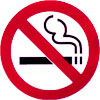Factors Affecting Quitting Smoking
 Introduction
Introduction- Stages of quitting
- Nicotine dependence
- The motivation to quit
- Withdrawal symptoms
- Where to start
Introduction
Quitting smoking can be very daunting, and people thinking of quitting need to go through several stages of contemplation before they are ready to face the associated physical and psychological challenges. It is estimated that up to 90% of smokers think they should quit, but only 20% are committed to quitting at any one time.
The factors associated with the decision to quit and the difficulty of continuing to not smoke depend upon your personal situation, experience, personality and support network.
 | For more information on smoking and its health effects, and some useful tools, videos and animations, see Smoking. |
Stages of quitting
Psychologists believe there are five main stages of the quitting process:
- Precontemplation: Precontemplation is when the initial thought about quitting comes to mind. You will usually set yourself a quit time within the next 6 months;
- Contemplation: Contemplation is when you are seriously thinking about quitting in the next 6 months;
- Preparation: Preparation is when you actually prepare for your quit attempt, which is planned to start within the month;
- Action: Action is when a quit attempt is made ands lasts at least 24 hours;
- Maintenance: Maintenance is when you are smoke-free for at least 6 months. This is the hardest step of quitting as you are most vulnerable to relapse.
Nicotine dependence
 The level of nicotine dependence is determined by a combination of many different factors that can vary between individuals. Dependence on nicotine (and any other addictive drug) is made up of psychological dependence, physical dependence and tolerance. This means that people become dependent (or ‘addicted‘) to the psychological effects of nicotine (e.g. stress relief) and the body becomes physically dependent on nicotine, such that without it the body experiences withdrawal symptoms. Tolerance is the process whereby smokers become used to nicotine. As they continue smoking, they need more and more nicotine to satisfy the same psychological and physical effects of the drug.
The level of nicotine dependence is determined by a combination of many different factors that can vary between individuals. Dependence on nicotine (and any other addictive drug) is made up of psychological dependence, physical dependence and tolerance. This means that people become dependent (or ‘addicted‘) to the psychological effects of nicotine (e.g. stress relief) and the body becomes physically dependent on nicotine, such that without it the body experiences withdrawal symptoms. Tolerance is the process whereby smokers become used to nicotine. As they continue smoking, they need more and more nicotine to satisfy the same psychological and physical effects of the drug.
The level of dependence on nicotine is the largest factor determining successful quit attempts. The higher the level of dependence, the harder it will be to quit.
A high level of physical dependence on nicotine is associated with:
- A greater exposure to nicotine, which results in further changes to the brain. This is called neuroadaptation. The more nicotine that the brain is exposed to, the more changes the brain will make to its structure and function in order to adapt to the extra nicotine. Once the brain has adapted to high levels of nicotine, it becomes dependent on having nicotine supplied;
- A greater natural need for nicotine. For example, some people may have a greater natural tendency to develop addictive behaviour, which is defined by their genetic predisposition; and
- More severe withdrawal symptoms.
A high level of psychological dependence on nicotine is associated with:
- A physical or social environment with strong cues and associations. Many people associate smoking with certain cues. For example, if you have a cigarette every time you have a coffee, the coffee becomes a cue. When you go to have a coffee, you will automatically associate this with also having a cigarette;
- An environment that has more opportunities to smoke. For example, if you work outside where you can smoke more often than somebody who works in an office, or if you live in a house with other smokers who don’t mind smoke in the house; and
- Being a learned habit. For many people, smoking is a learned behaviour that comes just as naturally as turning on a light when you walk into a dark room.
The motivation behind quitting
 Motivation is often thought of as the main reason behind quitting. If someone successfully quits smoking, they are thought to be highly motivated. While motivation is a very important part of quitting, it is not the sole predictor of outcome. If you fail a quit attempt, it does not mean you are not as motivated as somebody who successfully quits – it means that you have a higher level of nicotine dependence and you may need to try a few more times before you are successful. That said, motivation does play a crucial factor in the quitting process, especially in making the initial decision to quit.
Motivation is often thought of as the main reason behind quitting. If someone successfully quits smoking, they are thought to be highly motivated. While motivation is a very important part of quitting, it is not the sole predictor of outcome. If you fail a quit attempt, it does not mean you are not as motivated as somebody who successfully quits – it means that you have a higher level of nicotine dependence and you may need to try a few more times before you are successful. That said, motivation does play a crucial factor in the quitting process, especially in making the initial decision to quit.
It is hard to define what motivates someone to quit smoking and maintain cessation. The motivation for each person will be brought on by different factors. Some may want to improve fitness and sporting performance, some may be thinking of starting a family, some may want to save money … the list is endless!
Practise actively thinking about your reason to quit so you remember it every time you feel like a cigarette; it may help you to maintain smoking cessation.
Before you quit, you must believe that you are capable of doing so. This is a concept called self-efficacy. People who are self-efficacious will be more successful in quitting. If you have the motivation, the knowledge and an understanding of the challenges associated with quitting, you already have the tools you need in order to make a quit attempt. The more faith you have in yourself, then the easier it will be to quit. Remember, in Australia there are more people who have successfully quit smoking than people who still smoke. If 4.3 million other Aussies can quit smoking, so can you!
 | Have you quit smoking? Or are thinking about trying to quit? Use this tool to see what health benefits you have already achieved and what benefits you can expect in the future if you stick with it. For more information, see Health Benefits of Quitting Smoking Tool. |
Withdrawal symptoms
The physical symptoms of nicotine withdrawal are often associated with relapsing during a quit attempt. Withdrawal symptoms are most intense in the first week of smoking cessation, and last for 2–4 weeks.
Common withdrawal symptoms include:
- Mood changes, including agitation, aggression, depression and anxiety;
- Restlessness;
- Poor concentration;
- Increased appetite;
- Disturbed sleep;
- Decreased heart rate; and
- Decreased levels of adrenaline.
Keep in mind that these withdrawal symptoms will not last forever. If you make it past the first week, you are past the worst of it and the withdrawal symptoms will become less intense!
Where to start
Whether you are only just thinking about quitting or at the stage where you are completely adamant and prepared to quit, the best place to start is with your doctor. They will be able to provide you with some basic information about quitting and advise you on the best course of action.
 | For more information, see Health Benefits of Quitting Smoking. |
References
- Zwar N, Richmond R, Borland R, et al (eds). Smoking cessation guidelines for Australian general practice [online]. Fairbairn, ACT: quitnow, Australian Government Department of Health and Ageing; 2004 [cited 8 September 2010]. Available from: URL link
- Ellerman A, Ford C, Stillman S. Smoking cessation: 7.7 Personal factors associated with quitting. In: Scollo M, Winstanley M (eds). Tobacco in Australia: Facts and Issues (3rd edition) [online]. Carlton, VIC: Cancer Council Victoria; 2008 [cited 15 June 2010]. Available from: URL link
- Benowitz NL. Clinical pharmacology of nicotine: Implications for understanding, preventing, and treating tobacco addiction. Clin Pharmacol Ther. 2008;83(4):531-41. [Abstract]
- Winstanley M. Addiction: 6.9 Nicotine withdrawal syndrome. In: Scollo M, Winstanley M (eds). Tobacco in Australia: Facts and Issues (3rd edition) [online]. Carlton, VIC: Cancer Council Victoria; 2008 [cited 15 June 2010]. Available from: URL link
- Ellerman A, Ford C, Stillman S. Smoking cessation: 7.3 The process of quitting. In: Scollo M, Winstanley M (eds). Tobacco in Australia: Facts and Issues (3rd edition) [online]. Carlton, VIC: Cancer Council Victoria; 2008 [cited 15 June 2010]. Available from: URL link
Dates
Tags
Created by:

 Login
Login














